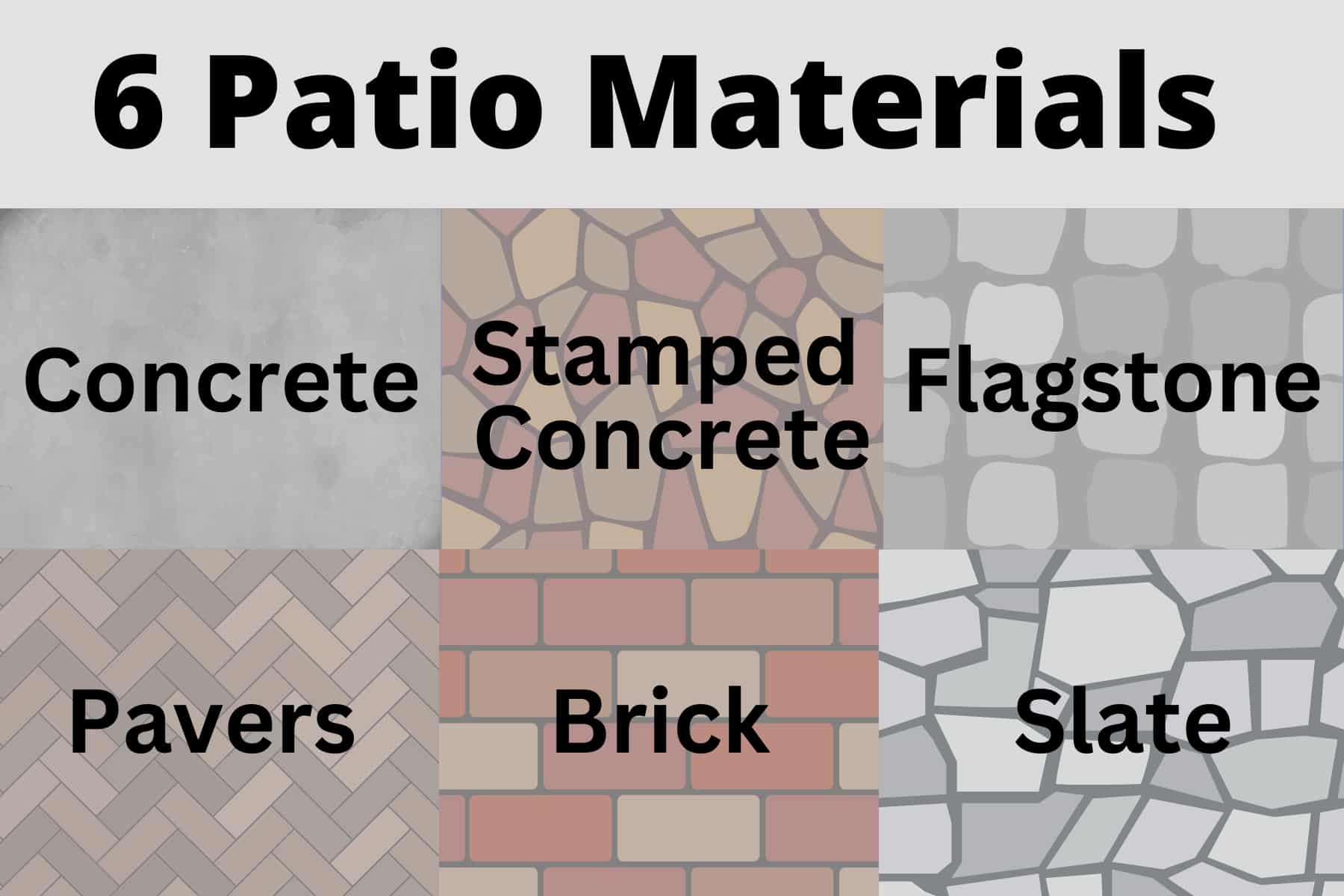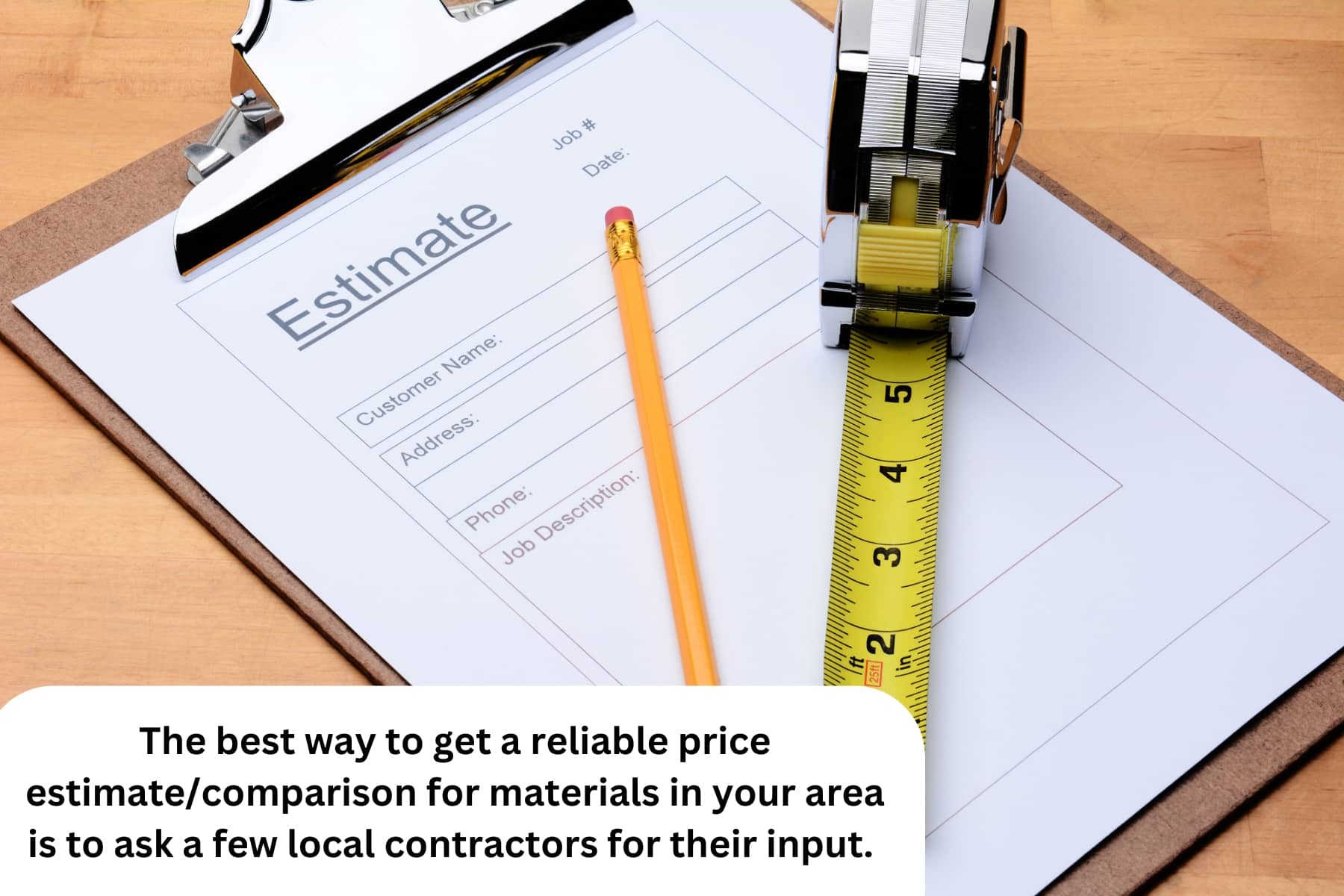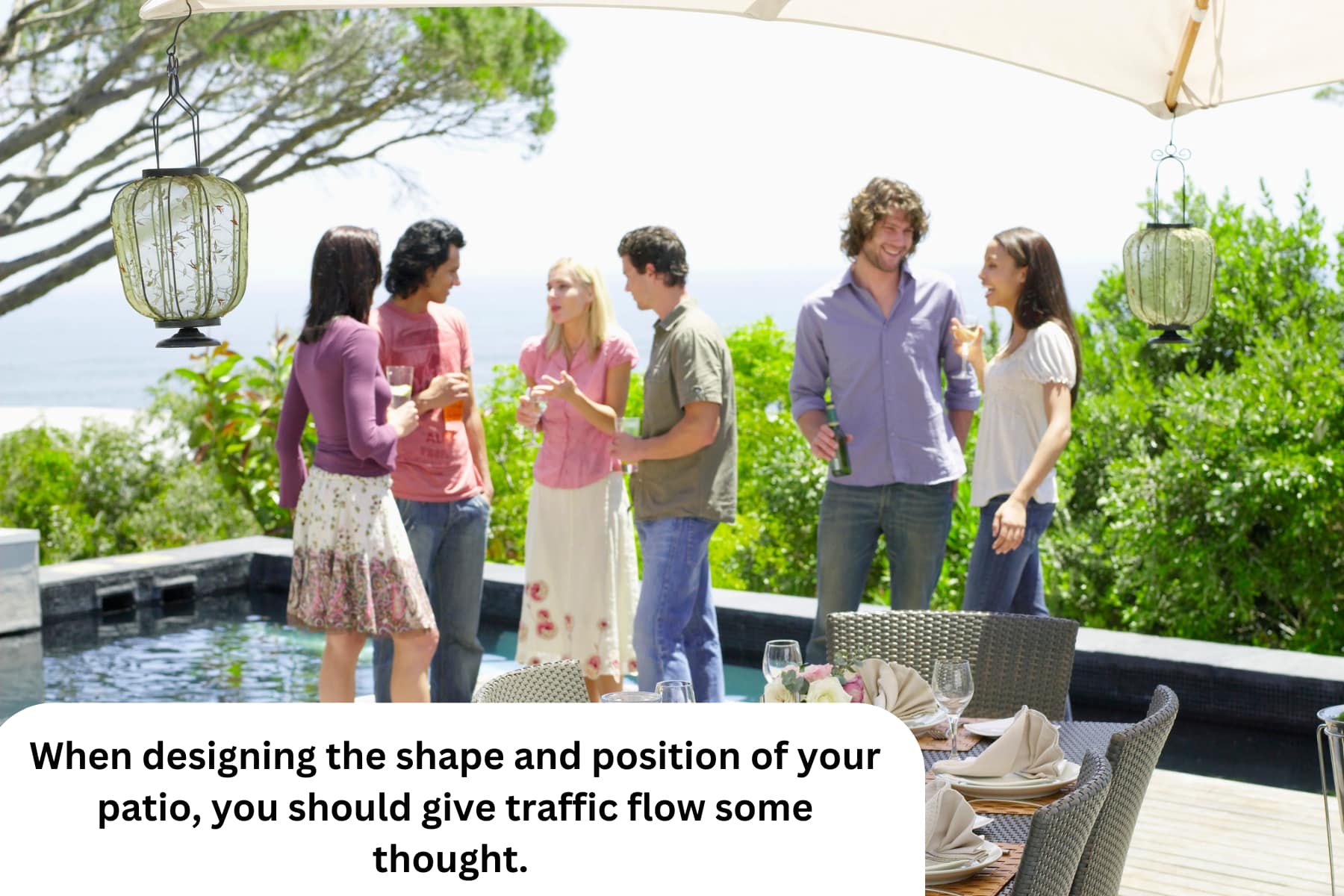Want To Build A Patio? Read This For Inspiration!
Are you thinking of building a patio?
At Fortress Construction, we understand how difficult it is to get started on a project like this! After all, there are lots of things to consider when designing a patio, and it’s difficult to find a starting point amid the jumble of details.
That’s why Fortress Construction wrote this article on building a beautiful patio you’ll love for years. The goal is to cut through the confusion and get you on your way to turning your patio dreams into reality.
We’ll cover patio materials, designs, questions to ask yourself before starting, and more! Are you ready to get started?
Here we go!
Patio Or Deck?
First, let’s straighten out precisely what a patio is and how it differs from a deck.
The main differences between patios and decks lie in two factors: height and material.
A patio is on ground level and is usually made of hardscaping materials such as stone, brick, pavers, or concrete. It may be unattached from your home, and its design may incorporate landscaping elements.
A deck is raised from ground level and made of wood or composite materials. Decks are always attached to your home in some way.
So which is better – a patio or a deck?
Patios are normally better for privacy and intimate conversations as they are on the ground level and can be screened by bushes and trees, whereas decks are better for admiring the view since they are raised. Patios are also better for campfires since lighting a fire on a wooden deck is not a great idea!
Here’s the bottom line:
There are benefits to both decks and patios. It all depends on what you want. But today, we are talking about patios, so let’s move on to what materials you could use to build your dream patio.
6 Patio Materials
There are tons of options when it comes to patio materials. Trying to choose one can look overwhelming!

Here are a few of the most popular choices, plus some hints as to what types of situations each material is best suited for.
Concrete
For a simple and cost-effective patio, poured concrete is your best option. It’s not as charming or attractive as other materials, but it’s fully functional and inexpensive to install.
One downside of a concrete patio is that it may be prone to cracking with the changing seasons, and if it cracks, it is hard to repair.
Concrete is your best option if you are on a tight budget and aren’t thinking too hard about aesthetics.
Stamped concrete
Stamped concrete is a step up from plain poured concrete but still easy on the budget. Concrete can be stamped to look like a vast range of other materials, such as wood, slate, flagstone, or pavers, but it is much cheaper than the real thing.
Stamped concrete may be your best option if you are on a budget but still want your space to look nice.
Flagstone
A natural flagstone patio is a great choice if you want real, authentic charm. They usually come with a higher price tag but have a stunning natural beauty that you can’t replicate with less expensive options.
If you want to spend some money investing in a really awesome, authentic stone patio, natural stone is the way to go!
Pavers
Pavers come in all shapes and sizes and can be an attractive and cost-effective option. Paver patios are more challenging to install than concrete, but pavers generally come cheaper than materials such as flagstone and slate.
Plus, anything that comes in small, individual pieces like pavers do is easier to replace if you get a small area of damage.
There are tons of different types of pavers, so they can be a good fit for lots of different situations.
Brick
With its versatility and classic aesthetic, brick pavers can be a beautiful choice. You can lay them in various patterns to create a unique look or keep it simple.
Brick is easy to repair if it cracks or breaks since you can replace it one brick at a time. Brick is well suited to lots of different situations.
Slate
Tile can be a lovely, unique choice for a patio. Tile comes in a variety of aesthetics, and you could even add an artistic mosaic if you want a truly unique patio.
One thing to remember with tile is that some types become slippery when wet, so not all types are the best choice for the area around a pool. Tile is a better choice for dry areas.
A Word On Material Cost
Most people want to know what various materials cost in relation to each other. That’s a reasonable question.
However, the cost of materials varies greatly depending on your location, the material’s manufacturer, and other factors. And let’s face it: researching these things online can be confusing at best and misleading at worst!
The best way to get a reliable price estimate/comparison for materials in your area is to ask a few local contractors for their input.

Patio Shape And Size
What size and shape your patio should be depends on numerous factors. Let’s look at what you should consider when deciding on a size and shape.
Size
Here are a few questions to ask yourself when deciding how large you should make your patio:
- What do I want to do on my patio?
- What type of furniture will these activities require?
- What size of group do I want to host on my patio?
- How big is my budget?
- How much space do I have on my property for my patio?
It’s more common to plan too small than too large! A good rule of thumb is to allow 25 square feet for every person in the group you plan to host. So for four people, you should have a 10X10 ft patio or larger.
Another thing to remember is that you should have at least 2-3 feet of walk-around space between the edge of your patio and your furniture. Many people don’t think about this as they plan. You may even want to buy your furniture and set it up before you build your patio, so you can measure how much space you need.
Shape
When it comes to deciding what shape to make your patio, the world’s your oyster! You can make a patio in virtually any shape you like.
- Square patios are the most common, practical, and cost-effective. They are straightforward to build and work well for entertaining large groups.
- Round patios are often unattached from the house and may draw visitors into the yard. They work well with a focal point in the center, such as a fire pit.
- You don’t have to stick with that, though! You can get creative with free-form patios that accommodate your available space or blend with your landscaping.

When designing the shape and position of your patio, you should give traffic flow some thought. For example, if you plan to host, it will be nice to have easy access to your kitchen from your patio. Or, if your patio borders a pool, a walkway to the nearest bathroom or the pool house would be convenient.
7 Patio Privacy Solutions
Patios are the best option for a private nook for quiet relaxation or intimate conversations. However, your space may not naturally provide privacy, and you may need to incorporate a privacy solution into your design.
Here are some ways you could do this:
- Plant trees or shrubs around your patio - A ring of fast-growing shrubs offers natural beauty and privacy.
- Hedges or walls - A privacy wall or hedge can do the trick for a permanent solution.
- Privacy panels or a trellis with climbing plants - A living wall makes a beautiful privacy solution!
- Large hanging plants - If you have a way to hang some large, leafy plants, such as ferns, they can partially block the view for you.
- Privacy curtains on a frame - Curtains allow you to shut the world out when you wish, but you can also open them to enjoy the view!
- Pillars encircling your patio - Pillars may not completely block the view, but they make you feel a little more enclosed and less out in the open.
- Initial positioning of your patio - You may have a sheltered nook in your backyard that would already make for great privacy!

Inspiration Jumpstart Questionnaire
Hopefully, this article has already been helpful to you! Often it’s hard to get started with a project until you have a way to think about it, and asking yourself questions can help you figure out what you want and where you should start.
Here is a list of questions to ask yourself to avoid feeling overwhelmed by details and start feeling the direction you want to go with your patio.
- What do you want to do on your patio? Host? Relax? Spend family time? Soak in a hot tub? Watch the sunset? Eat meals? Enjoy nature?
- What furniture will you need for the activities you want to enjoy on your patio? A dining table? Lounge chairs? Relaxing rockers?
- What size of groups do you want to host? Huge neighborhood get-togethers or extended family gatherings? Small dinner parties for friends? Just one or two close friends?
- What’s your style? Are you rustic? Modern? Contemporary?
- What style is your home? What materials and colors would best complement your home?
- Do you want any special features? A hot tub, pool, or fire pit? A fountain or other water feature?
- How about incorporating some lighting into your design? Some landscape lighting around your patio adds both ambiance and night-time safety to your space.
- What about shade? Is your space already shady, or should you think about some sort of artificial sunshade?
- How about the landscaping around your patio? You could plant some beautiful, colorful flowers nearby, incorporate some shrubs and ferns, or surround your patio with flowering trees!
The list could go on, but we hope these questions help you unlock your thinking so you can figure out what you want and where to start.
Conclusion
We wish you luck on your patio journey and hope your dreams turn out just as you envisioned them!
If you would like more help or are interested in finding a patio builder today, give us a call at Fortress Construction! We would be happy to help make your patio dreams a reality.
We specialize in patios, decks, three-season porches, screened-in porches, and more!
Contact us today–we can’t wait to hear from you!





